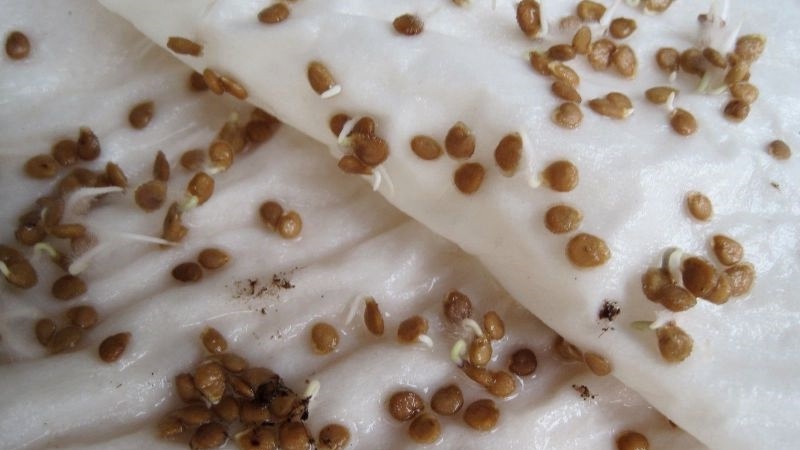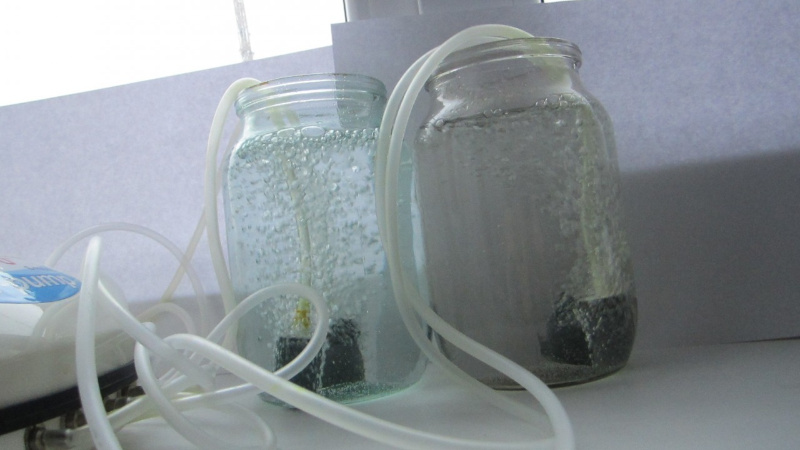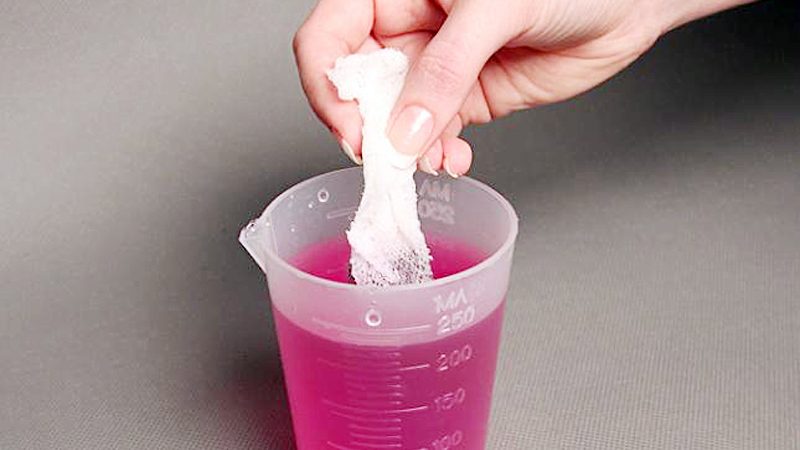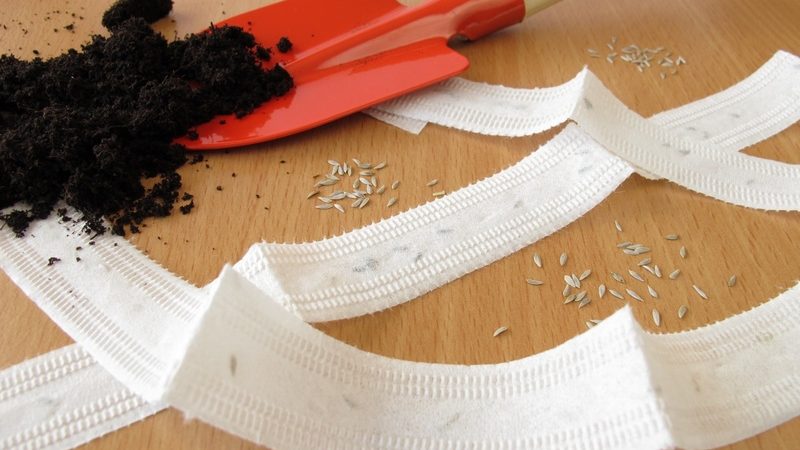Preparing carrot seeds before planting: what exactly to do and how to process
Success cultivation any garden crop, including carrots, largely depends on the correct choice of seed. To get fast and friendly shoots, the seeds are prepared before planting.
In the article, we will tell you in detail about what to do with carrot seeds before landing.
The content of the article
Terms of the procedure
Due to the high content of essential oils in the seed coat, carrot seeds germinate for a long time. That is why it is recommended to prepare them for sowing.
Depending on the chosen preparation method, the procedure is carried out 1-2 weeks before the planned date of the sowing campaign.
Experienced gardeners recommend checking carrot seeds for germination in 4-5 weeks. Especially if they are already 2-3 years old. The best germination is obtained the next season after harvest, then every year it decreases by an average of 50%.
Attention! Sowing with material that has not been tested for germination can lead to the fact that seedlings will be rare or not appear at all. This is most likely if the seeds are stale.
The germination test is carried out as follows. From all available varieties, several specimens are selected and sown in a container with earth. Be sure to note where which variety is planted. By the number of sprouts that appear, the percentage of germination of each variety is determined.
What processing gives

What does the preparation of carrot seeds for sowing give? Main advantages:
- pre-sowing material withstands temperature fluctuations better;
- young plants are less susceptible to diseases and insect pests;
- seedlings appear earlier and more amicably;
- the yield is increased.
Pre-sowing preparation is especially needed for those seeds that were obtained independently or purchased from unreliable producers.
Selection and disinfection
Presowing preparation begins with a careful examination, selection and disinfection.
Selection
Available seed scattered on a flat surface and examined. First of all, small and damaged specimens are removed.
The rest are mixed with a glass of warm water and stirred. The floating seeds are empty, they will not germinate, so they collect and thrown away. The remaining seeds are ready for the next preparation steps.
Disinfection
Etching destroys pathogenic microorganisms living on the seed coat. The most affordable way is to soak in a solution of potassium permanganate. A solution of copper sulfate (1 g per 1 liter of water) is also suitable.
Calibrated (selected) carrot seeds are poured into a bag and placed in a disinfecting solution. After 15-20 minutes, the bag is removed and washed with running water.
Also, disinfection is carried out not by chemical, but by thermal method. Hot water (not boiling water) is poured into a thermos and seeds are placed in it in a linen bag. After 20 minutes, the bag is removed.
The material processed in this way is completely ready for sowing on the beds. Now friendly shoots are guaranteed.
Subtleties of the soaking procedure
Soaking helps to get earlier shoots. The material tested for germination and etched is soaked in water, nutrient solutions, exposed to cold and heat. Let's talk about the intricacies of this procedure.
Use warm water for soaking. Experienced gardeners recommend using melted water (preheated).
The grains are kept in warm liquid for 20-30 hours. The water is changed 2-3 times to avoid the fermentation process.
Small carrot seeds are conveniently soaked in fabric bags.
Council. Use coffee filters for soaking. Special paper perfectly permeates moisture and does not sour.
It is important to ensure that the materials are constantly damp while soaking. Drying out of the swollen seeds will lead to their death.
The material soaked in this way is washed with water, dried to flowability and sowing is started. If sowing is not possible immediately after soaking, place the seeds in a damp cloth in a bag and refrigerate. So they will not deteriorate and become hardened.
Stratification
Stratification - exposure to different temperatures. This is a kind of imitation of natural conditions, allowing you to accelerate germination and get more friendly seedlings.
Distinguish between cold, warm and combined stratification.
Cold seeds are needed for those seeds whose embryos need to ripen. The seeds are moistened first and then placed in a cold place. Most tree and shrub crops need such ripening.
Warm stratification is indicated for seeds with an underdeveloped embryo. It is carried out at a temperature of + 23 ... + 26 ° C for 1-2 weeks. Such a procedure is needed, for example, lemongrass and lumbago.
Attention! Whatever type of stratification you use, make sure that the material is constantly wet. Drying out is detrimental to the embryos.
Combined stratification is the effect of first warm and then cold temperatures, or vice versa. This procedure is indicated for the seeds of those plants that germinate for a long time.
Carrots are just such crops. The moistened seeds are first kept warm for a couple of days, and then placed in the refrigerator.
Soaking methods
The seed is soaked in various ways. In addition to ordinary water, seeds are exposed to oxygen, nutrients, and an ash solution. Let's consider the most popular methods.
Bubbling

This is the soaking of seeds in warm water (temperature + 20 ° C) saturated with oxygen. After such treatment, the sprouts appear together and on average 5-8 days earlier.
At home, the procedure is carried out using an aquarium compressor placed in a jar of water. The larger the seeds, the longer the exposure time. It is enough to process carrots in this way for 18-29 hours.
Pelleting
Pelleting consists in covering the seeds with a nutritious shell. This method makes planting easier and reduces the seeding rate per unit area. The procedure is carried out 3-5 days before the start of the sowing campaign.
The nutritional composition is prepared as follows: a glass of liquid mullein is mixed with a glass of peat and a glass of humus. Pour 1-2 tsp into a liter jar. dry carrot seeds, add 1-2 tbsp. l. mixes and shake well. Then add another spoonful of mullein and shake again.
The procedure is repeated until each seed is covered with a shell. After that, the seeds are poured onto paper and dried.
Biostimulation
Biostimulation is the soaking of seeds before landing in nutrient solutions. The method is good in that it does not require significant labor costs and at the same time ensures friendly shoots, increases resistance to diseases and the vagaries of the weather.
For biostimulation, sodium humate, "Epin", "Zircon", "Effecton" are used. Prepare the nutrient solution according to the manufacturer's instructions. The seeds are soaked in the mixture for 10-12 hours, then they are dried and sowed.
Soaking in potassium permanganate and hydrogen peroxide

Solutions of potassium permanganate and hydrogen peroxide are used to destroy pathogens that can persist for a long time on the surface of the shell.
The seeds are soaked for 20-30 minutes, then washed with running water.Such a procedure will protect crops and increase yields.
In ash solution
It is known that wood ash is a storehouse of useful substances. Soaking in an ash solution (1 tablespoon per 5 liters of water) for 6-7 hours will accelerate the emergence of sprouts and help their rapid development.
In aloe juice
Aloe juice is another effective growth stimulant. It is prepared from leaves that have been kept in the refrigerator for a week. Carrot seeds are soaked in juice for 10-12 hours.
In boiling water
But it is not recommended to soak carrot seeds in boiling water. Under the influence of high temperature (above + 60 ... + 70 ° C) the seeds will cook and will not sprout at all.
Folk methods for fast germination

Among the proven folk methods for obtaining uniform seedlings, soaking seeds in snow or damp earth right in the garden is distinguished. For this, the seeds are poured into bags and buried in snow or ground to a depth of 20-25 cm for 1-2 weeks.
Council. Use different colored bags for each variety of carrots to avoid confusion. Also mark the place where the seeds are buried to make it easier to find them.
For 1-2 weeks in a humid environment, the seeds swell and harden. The extracted material is slightly dried until flowing and sown on the beds.
Common mistakes
It happens that a lot of time and effort has been spent on preparing the material, but the result is not encouraging. Why is this happening?
Let's list the most common mistakes:
- Using carrot seeds that are over 3-4 years old. The best germination rates are with fresh seeds harvested last year. If the seeds are old, no treatment will increase their low germination rate.
- The use of increased concentrations of nutrient solutions. When preparing biostimulating formulations, follow the manufacturer's recommendations. An increased dose often has the opposite effect.
- Soaking before winter sowing. Before winter, the seeds are sown dry, the swollen ones will die from low temperatures.
- Processing seed that does not need it. Presowing treatment is not indicated for all species. Carrot hybrids, granulated seeds, as well as those that have already been treated with fungicides and insecticides, do not need any preparation.
Conclusion
Preparation of carrot seeds for sowing guarantees friendly and timely emergence in carrot beds. This procedure is especially important if the seeds are more than one year old. The time and effort invested will return in the form of a rich harvest of juicy and crunchy root vegetables.